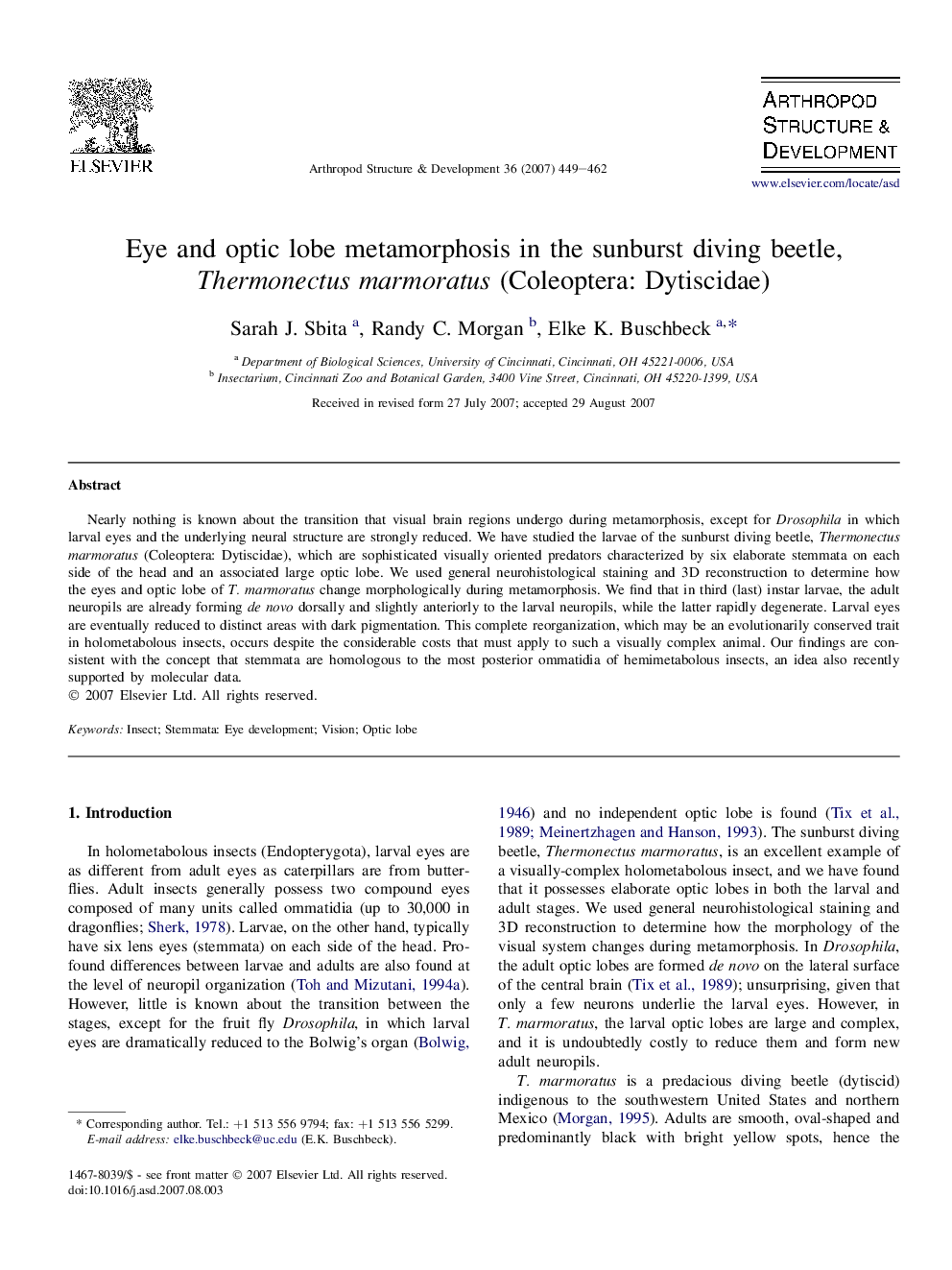| Article ID | Journal | Published Year | Pages | File Type |
|---|---|---|---|---|
| 2779023 | Arthropod Structure & Development | 2007 | 14 Pages |
Nearly nothing is known about the transition that visual brain regions undergo during metamorphosis, except for Drosophila in which larval eyes and the underlying neural structure are strongly reduced. We have studied the larvae of the sunburst diving beetle, Thermonectus marmoratus (Coleoptera: Dytiscidae), which are sophisticated visually oriented predators characterized by six elaborate stemmata on each side of the head and an associated large optic lobe. We used general neurohistological staining and 3D reconstruction to determine how the eyes and optic lobe of T. marmoratus change morphologically during metamorphosis. We find that in third (last) instar larvae, the adult neuropils are already forming de novo dorsally and slightly anteriorly to the larval neuropils, while the latter rapidly degenerate. Larval eyes are eventually reduced to distinct areas with dark pigmentation. This complete reorganization, which may be an evolutionarily conserved trait in holometabolous insects, occurs despite the considerable costs that must apply to such a visually complex animal. Our findings are consistent with the concept that stemmata are homologous to the most posterior ommatidia of hemimetabolous insects, an idea also recently supported by molecular data.
